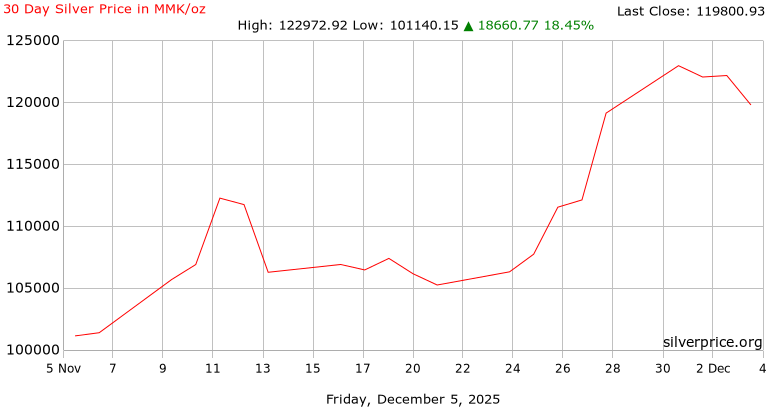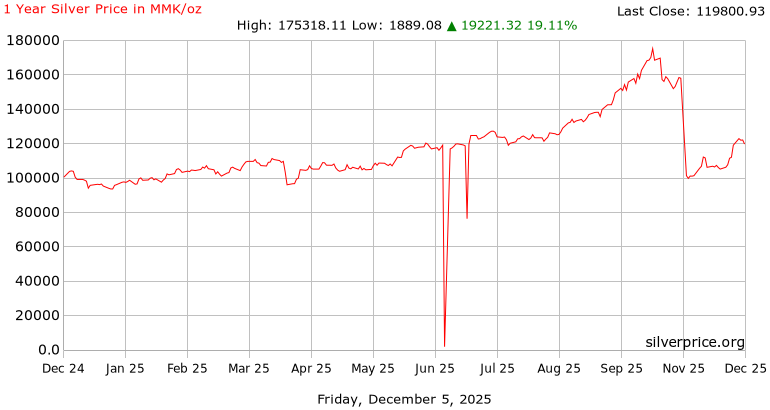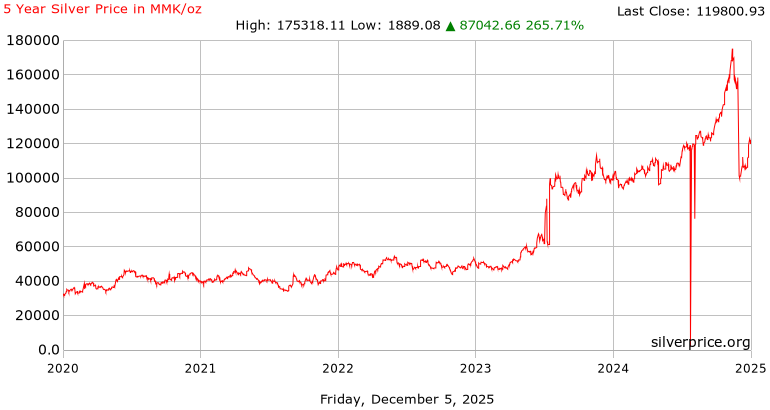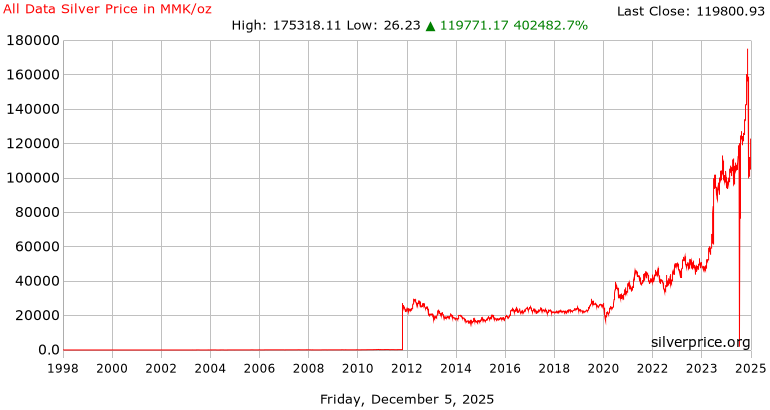Silver Price Myanmar
(Burmese Kyats)
Conversion : 1 troy ounce = 31.1034768 grams
Burmese Kyats 24 Hour Spot Silver Price
Burmese Kyats Silver Price History Charts
Silver Price Myanmar
The country of Myanmar is known officially as the Republic of the Union of Myanmar, but it is commonly referred to as Burma. The nation is located in Southeast Asia, and borders several other countries including India and China. The country’s government is a unitary parliamentary constitutional republic, and its official language is Burmese. The capital of the nation is the city of Naypyidaw, although its largest city is Yangon.
The official currency of the country is the Burmese Kyat. The first version of the currency was in place from 1852 to 1889, and was denominated in both gold and silver until 1889. Another kyat was introduced in 1943 during the Japanese occupation of the country, but only lasted until the end of the war in 1945 at which time it became worthless. In 1945, the Burmese Rupee was introduced and was in place about seven years until the third version of the kyat was introduced to replace it at par in 1952. This version is still in use today, and it also became decimalised into 100 smaller units of currency called pya.
The Burmese currency is issued and managed by the nation’s central bank, the Central Bank of Myanmar. The central bank has numerous other duties in addition to controlling the nation’s currency, including maintenance of financial stability and oversight of the country’s financial sector. The central bank was established in 1948, and is headquartered in the city of Naypyidaw.
If you are looking for silver quotes in the country or want to buy the metal, you will see prices quoted in the local currency. Quotes may also be available in other major global currencies such as Chinese Renminbi, U.S. Dollars, Japanese Yen, euros or Great British Pounds. Silver is typically quoted by the ounce, gram or kilo, although sometimes local measures of weight may also be quoted.
The country has a long tradition of both gold and silver crafts going back to the second century. Myanmar does have a couple silver mines, and its artisans still produce fine silverware to this day. The production of fine silver products takes years and years to master, and the nation does not appear to have a shortage of talented and knowledgeable craftsman. The nation has produced many silver antiques, and for thousands of years has produced fine products depicting Buddhist symbols and mythological scenes.
Like gold, silver has been widely viewed as a reliable store of wealth and value for centuries, and the metal was routinely used in the palaces and royal courts of Burmese kings between the 9th and 19th centuries. The Burmese silver was often set in high relief, and it typically had the artisan’s individual mark or signature.
Silver is still highly regarded in the nation today, and it may be purchased for its beauty and physical properties as well as for investment purposes. The products produced are typically made completely by hand without the use of machinery.














